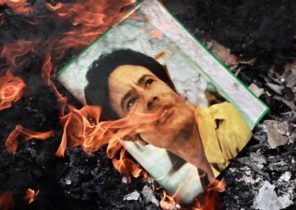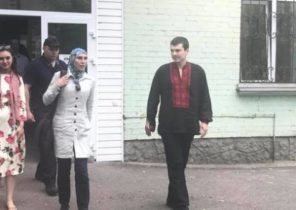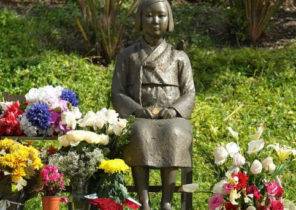
Lunokhod-1 was the first successful lunar Rover designed for exploration of other worlds. He was taken on the moon November 17, 1970, aboard the lander Luna 17. Management was carried out by the operators of the remote control in the Soviet Union, he traveled more than 10 kilometers (6 miles) for almost 10 months. For comparison, the Mars Opportunity it took about six years to achieve the same performance.
The participants of the space race
In the 1960-ies of the United States and the Soviet Union were involved in the “space race”, and each of the parties sought first to send a man to the moon, which was a way of demonstrating to the world its technological capabilities. Each of the parties that somehow managed to make the first — was launched into space the first man (Soviet Union), was made the first launches of two and three people into space (the United States) carried out the first docking in orbit (United States), and finally the landing of the first crew on the moon (United States).
The Soviet Union placed their hopes on sending a man to the moon with rockets “Probe”. However, after a series of unsuccessful test launches, including the explosion on the launch pad in 1968 with casualties, the Soviet Union instead began to focus on other lunar programs. Among them was the planting program in the automatic mode of the spacecraft on the lunar surface and remotely control planetary Rover.
Here is a list of the successes of the lunar program Tips: the Moon-3 (it received a image of the back side of the moon), Luna 9 (this machine in 1966 for the first time made a soft landing, that is, three years before the flight of Apollo 11 and the landing of astronauts on the moon) and Luna 16 (this machine returned to Earth with samples of lunar soil in 1970). And Luna-17 delivered to the moon remotely operates planetary Rovers.
Landing and descent apparatus on the surface of the moon
Camera Luna-17 successfully launched 10 Nov 1970, and five days later was in orbit of the moon. After a soft landing near the Sea of rains aboard Lunahod-1 for the ramp descended to the lunar surface.
“Lunahod-1 is a lunar, planetary Rover, it is shaped like a barrel with a convex cover, and it moves using eight independent from each other wheel — it was noted in a brief message to NASA about this flight. — Rover is equipped with conical antenna, cylindrical antenna aimed accurately, four television cameras, and special devices to impact the lunar surface in order to study the density of the lunar soil and carrying out mechanical tests.”
The lunar Rover worked on the solar battery, and at night the cold time its functioning was provided by a heater working on the radioactive isotope polonium-210. At this point, the temperature dropped to minus 150 degrees Celsius (238 degrees Fahrenheit). The moon always facing one side to the Earth, and so the light day, most of the dots on its surface lasts about two weeks. Night also lasts two weeks. According to the plan, the lunar Rover was supposed to work three lunar day. He surpassed the initial operational plans and worked for 11 lunar days — his work ended on 4 October 1971, that is after 14 years after the first satellite the Soviet Union launched into orbit.
According to NASA, by the end of his mission, the Lunokhod-1 has overcome approximately 10.54 km (6,5 miles), he gave the Land 20 thousand of television pictures and 200 television panoramas. In addition, it has conducted more than 500 studies of lunar soil.
The Legacy Of The Lunokhod-1
The success of the Lunokhod-1 was repeated by Lunokhod 2 in 1973 and the second unit already traveled on the lunar surface approximately 37 kilometers (22,9 miles). The lunar Rover Opportunity took 10 years to produce the same result on Mars. The image of the landing site Lunokhod-1 was obtained using a lunar space probe Lunar Reconnaissance Orbiter with a high resolution camera on Board. So, for example, made in 2012 pictures one can clearly see the lander, the Rover and its trace on the surface of the moon.
Retrotracheal of the lunar Rover had made a very amazing “leap” in 2010, when the researchers sent the laser signal indicating that it has not been damaged under the influence of lunar dust, or other elements.
Lasers are used to measure the exact distance from the earth to the moon, and also used lasers in the framework of the program “Apollo”.
After Lunokhod-2 more no vehicle made a soft landing as long as the Chinese in the framework of its space program launched the unit “Chang’e-3” lunar Rover “WiTu”. Although the “UTU” has ceased to move after the second lunar night, he continued to be in working condition and ceased to function only after 31 months after beginning his mission, and he thus far exceeded the previous record.







